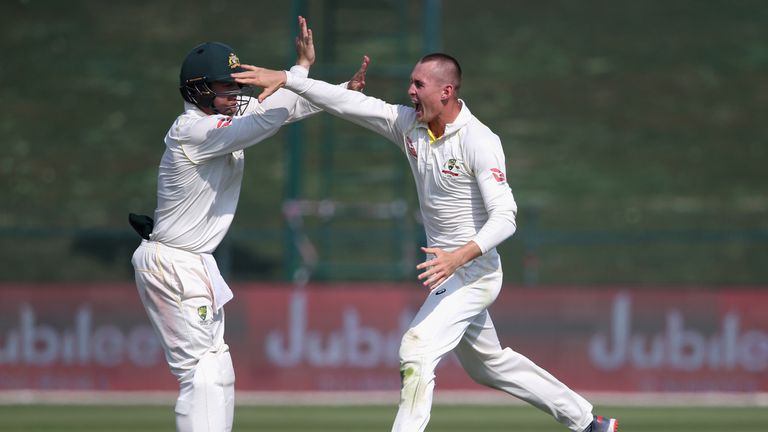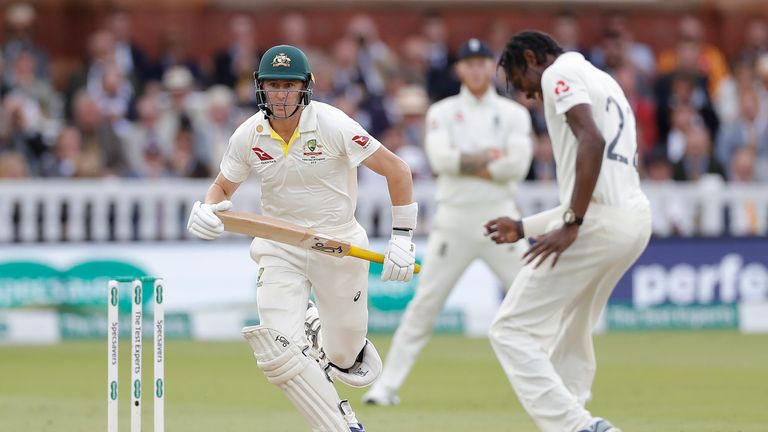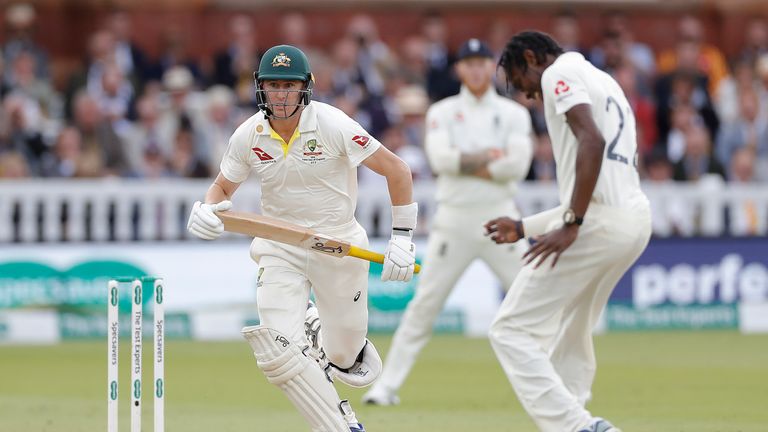Marnus Labuschagne: A closer look at Australia’s unexpected Ashes star
Marnus Labuschagne made history last weekend by becoming Test cricket’s first concussion substitute when he replaced the injured Steve Smith against England at Lord’s.
The 25-year-old all-rounder played a key role in the outcome of the second Ashes Test, recovering after taking an early bouncer in the face from Jofra Archer to score 59 in Australia’s innings as the tourists held on to force a draw and retain their 1-0 lead in the series.
But Labuschagne has been a man of ‘firsts’ during what is already a fascinating cricket career, including – technically at least – being in the thick of the action for another memorable Ashes moment almost nine years ago.
We investigate the somewhat quirky life and times of Marnus Labuschagne:
HOW DO YOU SAY THAT AGAIN?
First of all, there’s the issue of how to pronounce Labuschagne’s surname… and, according to the player himself, there are two options, depending on whether or not you happen to speak Afrikaans.
Labuschagne grew up in the town of Klerksdorp, in South Africa’s North West province, and spoke only Afrikaans until the age of 10, when he and his family emigrated to Brisbane.
England vs Australia
August 22, 2019, 10:00am
Live on
The correct pronunciation of the family name, which originates from France, is ‘Labus-cakh-nee’ – but the all-rounder is equally happy to be known by an ‘Australianised’ version, ‘Lab-oo-shane’.
MAN ON THE HOT SPOT
As a 16-year-old, Labuschagne was paid $90 a day to operate the Hot Spot cameras at the Gabba, showing whether ball had struck bat or pad and enabling TV replays to help umpires adjudicate on appeals for catches or lbw.
His were the hands moving the camera when Peter Siddle – now his international team-mate – recorded an Ashes hat-trick in the first Test, dismissing Alastair Cook, Matt Prior and Stuart Broad in successive deliveries to put Australia in command.
The match, however, was eventually drawn and England went on to triumph 3-1 in the five-match series.
DECEIVING THE BATSMAN
Representing Queensland against a Cricket Australia XI in September 2017, Labuschagne became the first player to be penalised under a new MCC law prohibiting ‘fake fielding’.
Fielding at mid-off, he dived to stop a shot from Param Uppal and, despite missing the ball, pretended to be launching a throw that initially caused the batsman to hesitate.
Uppal eventually completed the run once he realised Labuschagne had not fielded the ball – and the batting side were handed five penalty runs under Law 41.5, which applies if a fielder ‘feigns to throw a non-existent ball in an attempt to prevent the batsmen running’.
IN THE TEAM FOR HIS BOWLING (AND FIELDING)
Labuschagne had already established a reputation as a reliable close catcher – courtesy of his substitute fielding appearance in a Test against India in 2014 – when he was called up to the Australia squad for their series against Pakistan in the UAE last year.
“What actually should be the talking point, in my opinion, is how well Labuschagne played. He has come in as a concussion replacement – the first time in the history of Test cricket – and I think you now can’t leave him out of the next game.”
Nasser Hussain
However, he made a duck on his Test debut at Dubai and, although the second and final match of the series at Abu Dhabi brought Labuschagne better returns with scores of 25 and 43, it was his fielding and leg-spin that drew greater attention.
He pulled off an incredible juggling catch at short-leg, employing his thigh, knee, chest and hands to dismiss Mohammad Hafeez in Pakistan’s first innings, as well as taking 3-45 with the ball.
PRINCE OF WALES
After missing out on a central contract with Cricket Australia, Labuschagne signed for Glamorgan at the start of this summer – and his performances have helped to transform the Welsh county’s fortunes.
Source: Read Full Article






